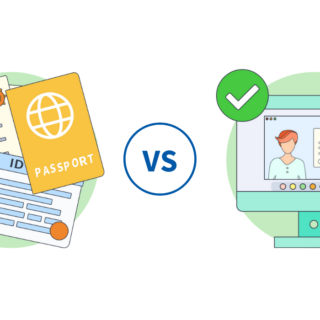
Classified advertisements security
Securing Classified Advertisements: A Comprehensive Approach
In today’s interconnected digital landscape, managing security on classified advertisement portals is paramount. As these platforms grow in popularity and reach, the potential for misuse and fraudulent activity increases. Ensuring a safe and trustworthy user experience is crucial, and this involves a multifaceted approach to security. This comprehensive guide delves into various strategies and technologies that can be employed to enhance the security of classified advertisement portals.
IP Blocking: A Frontline Defense
IP blocking is one of the first lines of defense against malicious activities. By using IP blocks sourced from reputable databases, classified advertisement portals can restrict access from regions known for high levels of fraudulent activity or from specific IP addresses linked to malicious behavior.
Implementing IP Blocking
- Acquisition of IP Data: Partner with cybersecurity firms or use IP reputation databases to obtain updated lists of suspicious IP addresses.
- Automated Systems: Integrate these lists into the portal’s infrastructure, using automated systems to continuously monitor and update IP blocks.
- Geolocation Filters: Implement geolocation filters to block entire regions if necessary, especially if those regions are consistently linked to fraudulent activities.
IP blocking is not foolproof, as savvy malicious actors can use VPNs or proxy servers to disguise their real IP addresses. However, it significantly reduces the risk by eliminating a large portion of potential threats at the outset.
ID Verification for High-Value Items
For advertisements involving high-value items, such as vehicles, real estate, or luxury goods, an ID verification system is essential. This added layer of security helps ensure that sellers are legitimate and can be held accountable if fraudulent activity occurs.
Steps in ID Verification
- Submission of Government-Issued IDs: Require sellers to submit government-issued identification during the listing process.
- Database Cross-Checking: Cross-check the submitted IDs against official databases to verify their authenticity.
- Facial Recognition: Use facial recognition technology to match the ID photo with the seller’s profile picture or a live selfie.
Implementing such a system requires robust data protection measures to safeguard users’ personal information. Ensuring compliance with data privacy laws, such as GDPR or CCPA, is critical in maintaining user trust and avoiding legal repercussions.
AI in Content Monitoring
Artificial Intelligence (AI) is revolutionizing the way classified advertisement portals monitor and manage content. AI systems can be trained to detect prohibited words, images, and data, effectively automating the identification of inappropriate or dangerous content.
Training AI Systems
- Data Collection: Gather a large dataset of both allowed and disallowed content, including text, images, and videos.
- Machine Learning Models: Develop and train machine learning models to recognize patterns and characteristics of prohibited content.
- Continuous Learning: Implement continuous learning mechanisms where the AI system is regularly updated with new examples of prohibited content.
AI in Action
- Text Analysis: Natural Language Processing (NLP) algorithms can scan advertisements for prohibited words or phrases, such as hate speech, illegal activities, or explicit content.
- Image Recognition: Computer vision technology can analyze images to detect explicit material, counterfeit goods, or other violations.
- Video Analysis: AI can process video content, analyzing both visual and audio elements to ensure compliance with platform policies.
When AI detects potentially problematic content, it is flagged and sent to human moderators for review. This combination of AI efficiency and human judgment ensures a high level of accuracy and reliability in content monitoring.
Human Moderation: The Final Check
Despite the capabilities of AI, human moderation remains a crucial component of content monitoring. Human moderators can make nuanced decisions and interpret context in ways that AI cannot, providing a necessary layer of oversight.
Role of Human Moderators
- Review Flagged Content: Moderators review content flagged by AI systems to determine if it indeed violates platform policies.
- Contextual Understanding: They assess the context in which content is posted, which is essential for making informed decisions.
- Appeals Process: Provide an appeals process where users can contest content removal, ensuring fairness and transparency.
Training for human moderators is essential. They should be well-versed in the platform’s policies, aware of cultural sensitivities, and equipped to handle the psychological impact of viewing disturbing content.
Payment Security and Fraud Prevention
Securing financial transactions is a critical aspect of managing a classified advertisement portal. Fraudulent transactions and chargebacks can lead to significant financial losses and damage user trust.
Implementing Payment Security
- Secure Payment Gateways: Use reputable payment gateways that offer encryption and secure transaction processing.
- Fraud Detection Algorithms: Deploy advanced algorithms to monitor transaction patterns and detect anomalies indicative of fraud.
- Verification Processes: Implement additional verification steps for high-value transactions, such as two-factor authentication (2FA) or one-time passwords (OTPs).
Chargeback Prevention
- Clear Policies: Establish clear refund and return policies to reduce the likelihood of chargebacks.
- Dispute Resolution: Provide a robust dispute resolution process to handle issues before they escalate to chargebacks.
- Transaction Monitoring: Continuously monitor transactions for signs of chargeback fraud, such as multiple transactions from a single account in a short period.
Data Protection and Privacy
Protecting user data is paramount. Classified advertisement portals collect a significant amount of personal information, and ensuring this data is secure is critical for maintaining user trust and complying with legal requirements.
Data Protection Measures
- Encryption: Encrypt all personal and transaction data both in transit and at rest.
- Access Controls: Implement strict access controls to ensure that only authorized personnel can access sensitive information.
- Regular Audits: Conduct regular security audits to identify and address vulnerabilities.
Compliance with data protection regulations, such as the General Data Protection Regulation (GDPR) in Europe or the California Consumer Privacy Act (CCPA) in the United States, is essential. These laws mandate specific measures for data protection and grant users rights over their personal information.
Educating Users
Educating users about security practices is a critical component of a comprehensive security strategy. Well-informed users are less likely to fall victim to scams and more likely to recognize and report suspicious activity.
User Education Initiatives
- Guides and Tutorials: Provide guides and tutorials on how to identify scams, protect personal information, and safely conduct transactions.
- Regular Updates: Send regular updates and reminders about security practices and emerging threats.
- Support Channels: Offer robust support channels where users can report suspicious activity and get assistance with security concerns.
Legal and Regulatory Compliance
Adhering to legal and regulatory standards is not only necessary for avoiding penalties but also for building user trust. Classified advertisement portals must stay abreast of evolving laws and regulations related to online commerce and user data.
Compliance Strategies
- Legal Counsel: Engage legal counsel to ensure compliance with relevant laws and regulations.
- Regular Reviews: Conduct regular reviews of policies and practices to ensure ongoing compliance.
- Transparency: Maintain transparency with users about data collection practices, security measures, and their rights.
Conclusion
Securing a classified advertisement portal involves a multifaceted approach that integrates technology, human oversight, and user education. By employing strategies such as IP blocking, ID verification, AI content monitoring, human moderation, payment security, and robust data protection measures, platforms can create a safer, more trustworthy environment for their users. Continuous adaptation and vigilance are key, as the landscape of digital security is constantly evolving. Through these comprehensive measures, classified advertisement portals can not only protect their users but also build a reputation for reliability and safety in the digital marketplace.
Ad Flare Software OÜ,
VAT: EE102734135
Vana-Viru 13, Estonia, Tallinn
Info





